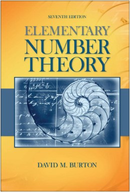(a) Given that p is a prime and p I an, prove that pn I an.(b) If gcd(a, b) = p, a
Chapter 3, Problem 5(choose chapter or problem)
(a) Given that p is a prime and p I an, prove that pn I an.(b) If gcd(a, b) = p, a prime, what are the possible values of gcd(a2, b2), gcd(a2, b) andgcd(a3, b2)?
Unfortunately, we don't have that question answered yet. But you can get it answered in just 5 hours by Logging in or Becoming a subscriber.
Becoming a subscriber
Or look for another answer
